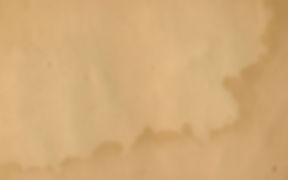
THINGS TO SEE AND DO IN THE SCOTTISH BORDERS
Castles and Historic Houses.

New Tweedbank railway station

Direct train from Tweedbank to central Edinburgh


New Tweedbank railway station
Earlston is ideally situated in the centre of the Scottish Borders, close to many different attractions including castles, the four Abbeys and numerous golf courses. We look forward to welcoming you to Broomfield House, and telling you all about the area.
Listed below are a few of the many different things that makes the Scottish Borders 'Scotland's number one short break destination'.
We are also delighted to have the BORDERS LINK RAILWAY close by to us. The beginning of the line is just 6 miles away at Tweedbank, where you can catch a direct train into Edinburgh, reaching Waverley station in central Edinburgh in 55 minutes, along a beautiful, scenic line.
There are numerous Great Houses and Castles close to Broomfield House Bed and Breakfast. Floors Castle, (situated 12 miles away in the Border's market town of Kelso), is the home of the Roxburghe family and is the largest inhabited castle in Scotland. The house has 365 windows - one for each day of the year. Abbotsford House, (situated 4 miles away near the village of Melrose), was the home of Sir Walter Scott, the 19th century novelist and poet (author of Rob Roy, Ivanhoe, Waverley and Lady of the Lake, to name a few of his works). It is set in beautiful grounds situated on the banks of the River Tweed. Thirlestane Castle, (situated 7 miles north in Lauder), is one of the 7 Great Houses of Scotland'. It is one of the oldest and finest castles in the country and is the home to one of Scotland's most distinguished and historically important families, the Maitlands. It is famous for its unrivalled 17th century plasterwork ceilings, fine furnishings and historic toys.
Traquair, (situated 12 miles away near Innerleithen), is Scotland's oldest continuously inhabited house. It was once a pleasure ground for Scottish Kings, was visited by Mary Queen of Scots, and has grounds that contain one of Scotland's largest mazes, a brewery which now produces a selection of traditional Scottish ales which have won awards all over the world, and beautiful woodland walks in the extensive grounds. Mellerstain House, (situated 4 miles away), is a unique architectural treasure, having been described as 'one of Britian's 10 best Stately Homes'. The building of the house was completed in the 18th century, and is the family residence of the 13th Earl and Countess of Haddington. It is set in 200 acres of beautiful parkland with an ornamental lake and woodland walks.
The Great Outdoors.
The Scottish Borders is the ideal place for visiting the beautiful countryside of Scotland, playing golf, cycling, fishing and walking.
GOLF
Known as having some of the friendliest golf clubs in the country, with scenic and well-varied golf courses, the Scottish Borders can offer more than 21 courses to choose from. Most of the courses are included in the 'Freedom of the Fairways Golf Passport', which means visiting golfers get to enjoy a great variety of courses at a great rate.
MOUNTAIN BIKING
The Scottish Borders is famous for its mountain biking and has world-class trails at Glentress and Newcastleton, part of the famous 7stanes mountain biking network. There is also the Four Abbeys Cycle Route (a 55 mile cycle ride around the central Borders, mainly on quiet roads, and taking you past Melrose Abbey (founded in 1136, and where the heart of Robert the Bruce is buried); Dryburgh Abbey (built by Praemonstratensian Monks in 1150, on the banks of the River Tweed, and is where Sir Walter Scott is buried); Kelso Abbey (founded in 1128, it is the largest of the Border Abbeys); and Jedburgh Abbey (founded in 1138, and, although roofless and damaged, it retains enough character to make it one of the finest medieval buildings in Scotland). The Tweed Cycle Way and the Borderloop (a 250-mile circular route spanning the region) are another couple of cycling routes in the area.
FISHING
For world-class salmon fishing, look no further than the River Tweed, Scotland's second longest river, internationally famous for its salmon, where more fish are caught by fly than on any other river in the UK. Although it is better known as a salmon river, it also contains good stocks of wild brown trout and grayling. Excellent sea trout can be caught in the Tweed's tributaries. Rainbow trout are found in local lochs; and sea fishing on the Berwickshire coast is both excellent and within 45 minutes of Broomfield House.
WALKING
The surrounding area is an ideal place to go walking. if you just fancy a morning stroll, there are superb walks outside our front door, of varying lengths and difficulty. The local River Leader is 5 minutes walk from Broomfield House, where the local woods, meadows, hump-back stone bridges and suspension bridges provide beautiful riverside walks. Located 5 minutes drive away is the Leaderfoot Viaduct - a 19-span, brick-arched railway viaduct which was opened in 1863, and subsequently closed as a passenger railway viaduct in 1948. There are numerous walks that are in this area, as the bridge spans the River Tweed, where a local network of footpaths has been established, for example, the Southern Upland Way, the Borders Abbeys Way and the St Cuthbert's Way. The newest walk, that was opened in Spring 2013, is called the Diamond Jubilee Path, in celebration of Queen Elizabeth II's Diamond Jubilee. The 3.25 mile/5.2 km route between Earlston and Leaderfoot is primarily designed as a country walk, and varied plants, birds and animals can be spotted along the way.
